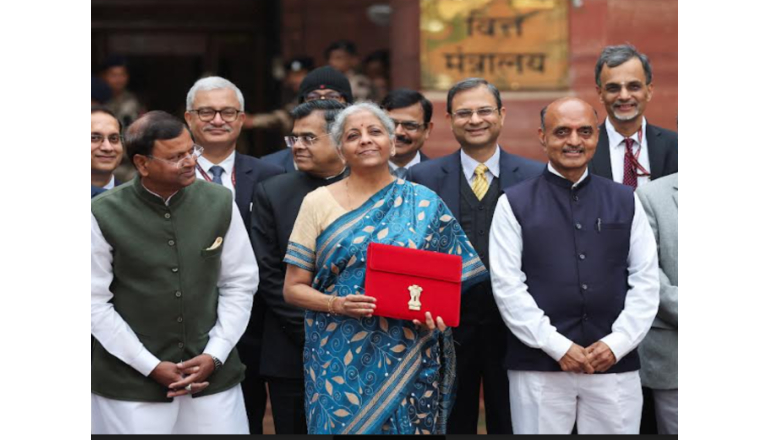The Budget 2024 is an interim budget.
Though being populist, Nirmala Sitharaman, Union Finance Minister, carefully and successfully has traded on the inclusive lines or, in simple words, kept it women (rural) centric.
The re-definition of GDP to Governance, Development and Performance, while being a welcome move, must be taken with a pinch of salt, though.
Ms Sitharaman charts a clear picture for ‘Vikasit Bharat by 2047’.
The key highlights of the renewed focus are the ‘garib (poor)’, ‘women’, ‘yuva (the youth)’ and ‘kisan (farmer)’.
Starting with the point of inclusive development and growth, the FM highlights increased focus on the Northeastern states of India to promote geographic inclusivity and diversity.
She cements the government strategy with updates on various schemes like Housing for All, Electricity for All, Har Ghar jal, Cooking gas, and Banking services for All.
Empowering people and making social justice a necessary and effective governance model has been another key point in today’s budget speech. Ms Sitharaman underscores the continued efforts of the government toward access to equal opportunities, popular welfare and an outcomes-based focus.
I appreciate the focus on diversity and inclusion that dominated the budget speech in many forms. I am reading it as a positive step for sustainable (sustainability) growth.
“Female enrolment in STEM (science, technology, engineering, and mathematics) courses have seen a 43 percent spike, one of the highest in the world,” she states.
No doubt this will reflect in women participation in the workforce. Especially at a time when Indian companies are seriously implementing DEI in the workforce. While the global peers are much ahead, this shows that India is fast catching up.
Most notable were her mentions about the triple talaq, reservation of 1/3 seats for women in Parliament and state Assemblies, and allotting about 70 percent houses under PM Awas Yojana to women as owners or co-owners.
Climate action:
In a welcome move, the budget speech acknowledges the importance of climate action initiatives. Fresh bilateral packets with foreign partners are a positive move, considering the funding constraints in the segment. Reiterating the government’s target to achieve net-zero by 2070, the FM details the supporting initiates.
For one, India will set up three major economic railway corridors for energy, mineral and energy to reduce congestion and logistics costs.
Green energy and transport:
The FM has outlined a clear charter for green energy. The wind power segment which was sidelined for a couple of years, is back in focus with offshore wind power.
Some of the key announcements are:
- Viability Gap Funding (VGF) to harness offshore wind potential for 1 GW.
- Roof-top-Solar installations on 1 crore households providing upto 300 units free units on a monthly basis.
- Coal gasification or liquefaction to the tune of 100 metric tonnes by 2030.
- Phased mandatory blending of compressed biogas, uncompressed natural gas
- Financial assistance for EV manufacturing and charging infrastructure
- E-buses for public transport
Eco-friendly
The FM has earned applause with a major announcement in the form of the launch of a bio-manufacturing and bio-foundry. She states that these units will drive eco-friendly alternatives like bio-polymers, bio-plastics, bio-pharma and bio-agri inputs.
This, according to the Finance minister, will bring in a landscape change from consumptive manufacturing to regenerative manufacturing.
“Blue economy” also finds a mention along with the green initiatives. Ms Sitharaman states that under Blue Economy 2.0, efforts will be made to restore coastal areas with a focus on aqua and marine culture.
Port connectivity in island cities to boost tourism and the local economy is also a welcome announcement.
Our take:
Though Ms Sitharman focuses on women and climate action, there were no surprises in the budget. Green hydrogen, carbon credit/ trading, a clear target of energy transition/ EV adoption, skilling for green jobs and financing challenges are missing from the budget speech.
Considering this is an interim budget, I am hoping that these issues will be addressed with detailed outlays and policy updates in July.

